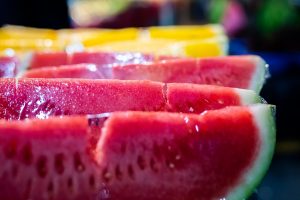Seedless watermelons are the result of controlled manipulation of watermelon chromosomes. In a traditional, seeded watermelon, the egg cells in the female flowers contain one set of chromosomes (1n). Pollen, from a male flower also contains one set of chromosomes (1n, again). When the egg is fertilized with pollen (or pollinated), the fertilized egg has two sets of chromosomes (1n + 1n = 2n). Because the fertilized egg has 2n, it is called a diploid cell. Colchicine watermelon Pdf
To create seedless watermelons, young watermelon plants are treated with colchicine. This causes the eggs in the flowers to develop with two sets of chromosomes (2n), instead of one. When the eggs are pollinated, they create triploid cells (because 2n + 1n = 3n). These cells are capable of maturing into fruit, but the seeds in that fruit are not genetically viable – so they can’t be fertilized and develop the hard, black testa.
How to Tell If Watermelon Is Ripe
You can do the weight test along with other melon methods. Next time you’re at the market or grocery store, look out for these tell-tale signs of a ripe watermelon:
- A dark green rind
- A golden yellow spot on the melon’s underside
- A deep, hollow sound when thumped
- Brown spots, webbing or scarring
- Heavy for its size






